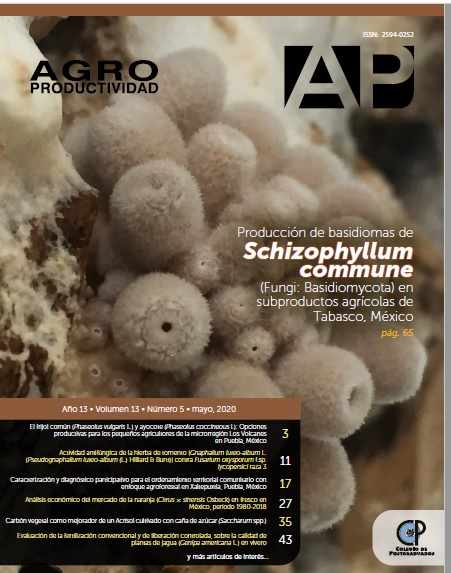Producción y comercialización de malanga (Colocasia esculenta (L.) Shott) en Actopan, Veracruz, México: Perspectiva de cadena de valor
##plugins.themes.bootstrap3.article.main##
Keywords
Malanga, comercializacion, exportación, acopiadores
Resumen
Objetivo: Analizar la producción y comercialización de malanga en Actopan, Veracruz, México, con enfoque de cadena de valor.
Diseño/metodología/aproximación: Se consultaron bases de datos oficiales y se aplicaron 28 cuestionarios a productores y siete a representantes de empresas empacadoras, con enfoque de cadena de valor.
Resultados: El 50% de productores entrevistados son de pequeña escala (0.5-3.0 ha) con rendimientos promedio anual de 50 t ha -1 . Los principales problemas que estos productores enfrentan son: altos precios de insumos agrícolas; bajos precios de mercado del producto; plagas y enfermedades. La comercialización del producto se realiza a través de acopiadores minoristas y mayoristas de la región; no existen contratos de compra y venta, los acuerdos son de palabra. Las empresas 3 empacadoras se encargan de realizar el proceso de maquila: limpia, selección, desinfección, etiquetado, empaque y distribución. El 90% del mercado de la malanga en fresco es para Estados Unidos.
Limitaciones del estudio/implicaciones: Los productores de malanga carecen de un organismo gubernamental que los represente, entonces, la información de producción, costos y precios al mayoreo es limitada y dispersa.
Hallazgos/conclusiones: La producción y comercialización de malanga es de gran importancia económica y social, genera ingresos económicos y empleos temporales durante todo el año; tiene costos de producción relativamente bajos y alto rendimiento. En general beneficia a los agentes económicos de la cadena de valor. Sin embargo, la falta de organización de los productores no les permite utilizar
economías de escala, acceso a mercados preferentes y altos precios pagados al productor.

